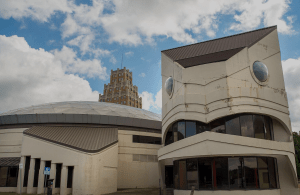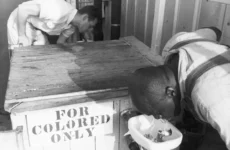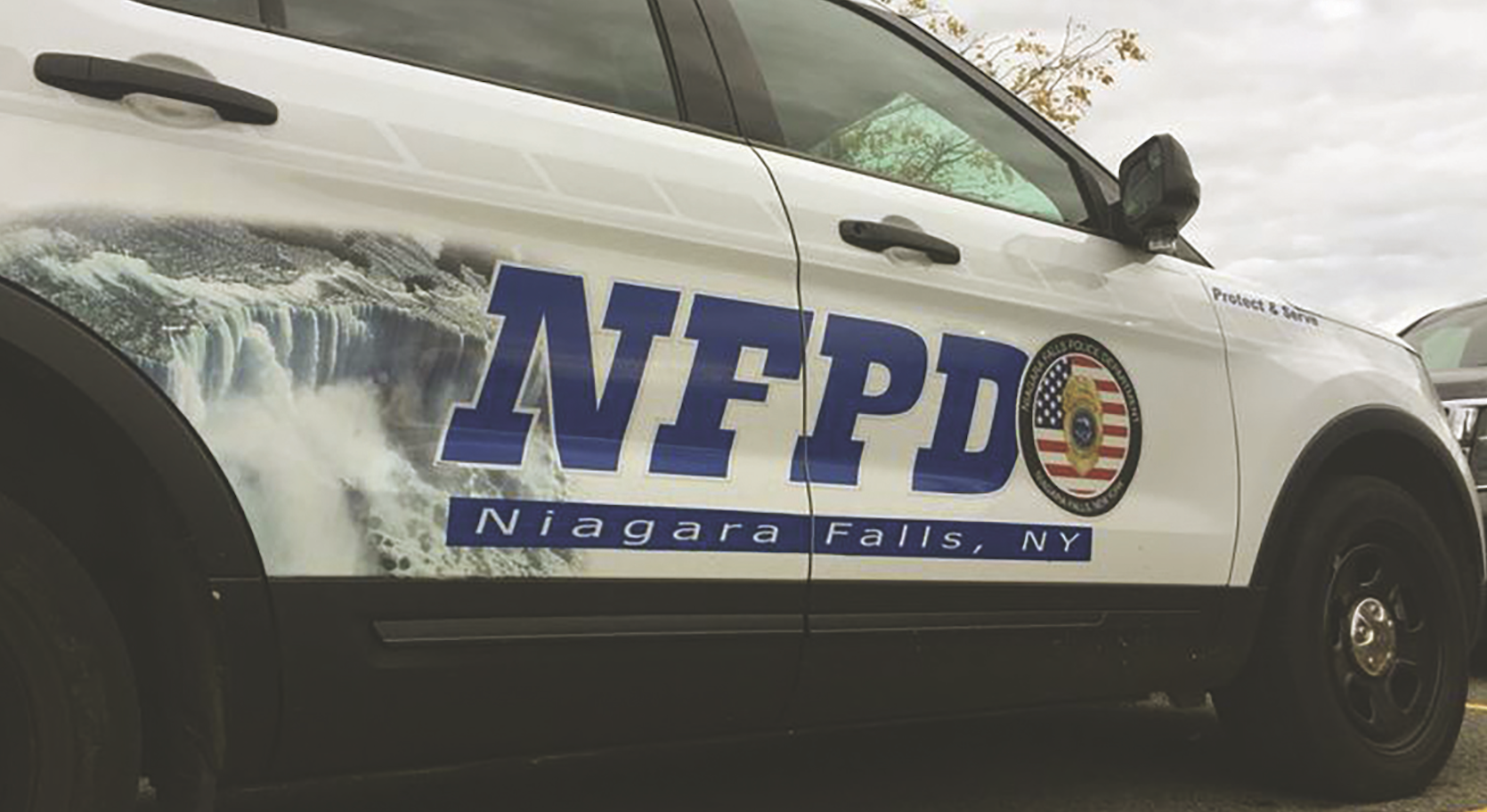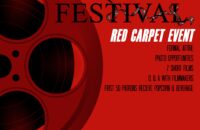Niagara Falls, NY – During a meeting on Feb. 1, Niagara Falls Historic Preservation Commission members voted to designate the long-vacant Turtle building as a historic landmark.
Niagara Falls Redevelopment, a private company, owns the domed building with a large concrete head and legs that are supposed to represent a turtle.
In a unanimous 6-0 vote, with one member absent, the commission officially endorsed their position to seek the City Council’s approval to make a state or federal landmark application, citing their opinion that the Turtle’s architectural and cultural significance is “exceptionally important.”
Commission chair Brett Doster, a licensed architect since 2019, led the charge. He does not own the Turtle, nor has he provided a plan for its preservation, or expressed interest in investing in the building.
He stated, “We just see value in the property.”
The owner, NFR, is opposed to the landmark designation, which prohibits the development of the property unless the dome with its concrete head and legs remains precisely as they are – significantly limiting the use of the land and the building on it.
The Turtle sits on almost two acres of land adjacent to the Niagara Falls State Park, the most visited state park in the USA.
In a letter to the Historic Preservation Commission, NFR attorney Ryan Altieri raised objections to the designation on several grounds.
These grounds include the building’s young age – it is only 42 years old – eight years shy of the benchmark 50 years for historic designation – and the lack of evidence supporting the building’s “exceptionally important” historic status.
The preservation committee’s plan to designate the Turtle needs approval from the five-member city council before it can begin the long and expensive process of fighting for approval on the state or federal level to be considered a local landmark.
Altieri highlighted the absence of any property less than 50 years old on the National Register of Historic Places in Niagara Falls, and questioned the commission’s failure to demonstrate the building’s exceptional significance. He also referenced past alterations to the building, suggesting they would undermine any claim to exceptional importance.
The Turtle lost its concrete tail about 25 years ago.
Turtle’s Undistiguished History
The Turtle building was initially constructed in 1982 as a Native American performance center and museum, and soon flopped financially. The Indian owners failed to pay their bills, stiffed several vendors and taxing authorities, and finally lost the building. The property is not on Indian-owned land.
The City of Niagara Falls eventually took ownership and saw no special or historical significance to a large domed building, meant as a performance center imprudently designed to seat only 400 people.
The Turtle has stood vacant for 28 years.
Some critics argue the push for preservation amounts to Commission Chairman Brett Doster’s dreams of cultural appropriation, calling Doster a “pretendian,” a derogatory term normally used for people who falsely claim to have Indigenous heritage or ancestry without evidence to support their claims.
Many question how Preservation Committee Chairman Doster, who is not Indian, feels it is his responsibility to preserve for the Seneca or Tuscarora Nations what he deems their heritage.
Neither tribe has expressed an interest in buying the building, with the restrictions Doster wants to place on it.

The Turtle building (dome) sits adjacent to the Niagara Falls State Park and its highest and best use might require its demolition.
However, Doster and the commission’s part-time members have little experience in Native American history.
Not Historic
The Niagara Falls Historic Preservation Commission seems unaware that the Turtle’s architectural style does not align with traditional Native American construction methods. Native Americans in the region historically inhabited longhouses and used natural materials in construction, a far cry from large concrete domes like The Turtle.
In their naivete, Doster persuaded the Preservation Committee to think this was true authentic Native American history, because a few failed Indian businessmen once ran it into bankruptcy. He also argued that it is a significant monument to Indian heritage, because it is shaped like a tailless turtle.
While the turtle holds spiritual and cultural importance in various Native American tribes, including the Seneca, that does not mean that a concrete turtle’s head put on a failed building makes it historic.

Impractical Idea
Doster’s move is seen as a pandering to cultural appropriation, which is unwarranted and not supported by Indians with sufficient funding capabilities to restore the Turtle to its former state when it was an oversized domed auditorium with poor acoustics.
It remains to be seen if Doster, whom Buffalo-based Architectural Resources employs, has any private or business interests associated with a forced restoration of the Turtle.
Doster’s firm, led by Kevin D. Murrett, specializes in “behavioral health design intelligence and consultation on institutional design standards.”
Those knowledgeable about the Turtle estimate it will cost upwards of $30 – 40 million to renovate it while preserving it as a historic landmark – making private investment into the obsolete and poorly designed building challenging.
Taxpayers may end up paying the bill.
The domed auditorium, with 67,000 square feet, does not have parking, making it economically infeasible as an auditorium, which is one of the many reasons it failed when it was last operated in the 1990s.
Lack of Perspective

The controversy deepened since Doster, seemingly anxious to designate the building as “historic,” led his volunteer commission members Kristian Ruggiero, Mike Pesarchick, Jessica Berry, Jessica Collins, Noah Muñoz, Georgia Robinson-Bradberry and Andrea Fortin-Nossavage to follow his lead and approve the protracted legal battle for the city taxpayers to fight to make the obsolete Turtle historic. Muñoz did not attend the meeting nor vote in favor of the Turtle.
NFR, in turn, is set to fight the historic designation, which is anything but certain, since the building is not old or historical, even if the council approves it.
The state and federal historical approval process for buildings under 50 years old is challenging and requires at least an architectural firm’s employment to assist. It is unknown whether Doster’s firm will get the lucrative work to help the city fight to get the approval from the state or federal level.
Artistic Value
Doster argued that the poorly cast concrete appendages, which are supposed to resemble a turtle’s head and limbs, have unique historical significance because of their artistic value.
However, a simple test anyone can do from their phone challenges the authenticity of this claim.
The Reporter showed people outside the Western, NY area (where they would not likely know the building) a photo of the Turtle’s head and asked them to guess what it was.

What is it?
Here are the results:
Outer space creature or alien 24 (including Plutonite, Andromedin, Astrobotic, Cylon, Romulan and Martian)
Cat 15
Eagle 13
Rat 12
Frog 11
Dragon 9
Devil 7
Sea monster 4
Insect 4
Human: 3
Dinosaur, 3
Spaceship 2
Turtle 2
Shark 2
One vote each: pumpkin carving, tribal mask, mossy stone, gnome, green beetle, sorcerer, guppy, shrimp, sturgeon, jellyfish, barnacle, bear, walrus, mole, chameleon, bat, duckbill platypus, dragonfly, fox, lizard, penguin, chicken, monkey, fiddler crab, salamander, baboon, criminal.
The rest answered unknown.
Try the test yourself. Text this photo to your out-of-town friends. Do not tell them why you are asking or what it is. Just ask them what it is.
See how few will identify it as a turtle.
Bottom Line
The dispute underscores broader tensions surrounding cultural heritage, urban development, government overreach, and possible undisclosed mercenary or political interests by government officials.
In their quest to label a property like the Turtle as historic, Doster and his crew have ignored or downplayed that restricting the Turtle to be forever in its current shape is “who will pay for it?”
It was not successful as a poorly designed auditorium with enormous heating and cooling challenges and poor acoustics, not to mention its impractical stage-to-seating ratio.
How can the imposition of maintaining an obsolete and poorly designed building serve the community’s interests?
It almost guarantees that next to the Niagara Falls State Park, a vacant dome building with an outer space alien’s concrete head will remain empty for decades.




















